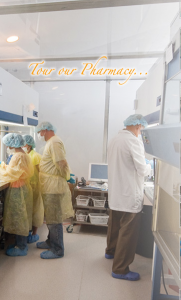Serious eye infections reopen Lucentis v Avastin debate
The FDA earlier this week issued a safety alert to doctors that repackaged bevacizumab (Avastin®) had caused serious eye infections in 12 patients in Florida. The New York Times today reports that five patients at the Veterans Affairs Medical Center in Los Angeles have gone blind as a result of an eye infection following injection of compounded Avastin.
I have written previously about the Lucentis v Avastin debate and the results in the Comparison of Age-related macular degeneration treatment trial (CATT) published earlier this year in the New England Journal of Medicine.
It is not good news that contamination has occurred while compounding bevacizumab (Avastin) from sterile100mg/4mL single use preservative-free vials into individual 1mL syringes.
Genentech/Roche may see this news as reinforcing their position that ranibizumab (Lucentis®) should only be used, since it comes in the correct dose for injection in the eye. However, this ignores the reality caused by the fact that Lucentis is approximately 40x the cost of compounded Avastin ($1950 versus $50).
This week’s news does not support the proposition that intravitreal injection of bevacizumab is not safe and effective for the treatment of AMD, nor any suggestion that pharmacies properly accredited and experienced in aseptic techniques are not qualified to do this. Pharmacists compound drugs everyday.
As the FDA notes in their alert:
“Health care professionals should be aware that repackaging sterile drugs without proper aseptic technique can compromise product sterility, potentially putting the patient at risk for microbial infections. Health care professionals should ensure that drug products are obtained from appropriate, reliable sources and properly administered.”
However, there is no evidence to suggest that the pharmacies who undertook the Avastin compounding that led to the infection were not “appropriate, reliable sources and properly administered.”
The New York Times notes that the the contaminated Avastin came from the pharmacy at the main campus of the V.A. Greater Los Angeles Healthcare System. There is no mention of whether the VA pharmacists did the compounding themselves or sourced the drug elsewhere.
According to a news report in the Florida SunSentinel, the pharmacy identified as the source of the infection in Florida is InfuPharma. This is not a retail pharmacist in the high street, but a specialist compounding pharmacy that advertises sterile preparations for numerous products. Licensed pharmacists run this specialist company and looking at their website they do appear to be experienced in this area.
Endophthalmitis is a serious eye infection that may lead to loss of vision. The contamination should not have occurred. These incidents should not, however, be blown out of proportion in the Lucentis v. Avastin debate.
Sadly, infections and contamination happen in hospitals and the healthcare industry all the time. Even the FDA approved manufacturing facilities of pharmaceutical companies have experienced problems in recent years. Last summer, BMS experienced issues with sterile manufacturing standards at their Puerto Rico plant following FDA inspections. Earlier this week, Baxter announced they had filed a lawsuit against Teva for indemnification over a hepatitis C outbreak following reuse of oversize propofol vials.
The news of serious eye infections with repackaged Avastin must, therefore, be put in context. There are countless patients around the world who have benefited from intravitreal injections of Avastin for treatment of their age-related macular degeneration (AMD). The issue raised by the infections in Florida and Los Angeles is whether there is adequate inspection and certification of compounding pharmacies, and whether there is a need for more State regulation and inspections in this area.
Disclosure: I have written freelance articles for Pharmacy Today, the magazine of the American Pharmacists Association.

One Response to “Serious eye infections reopen Lucentis v Avastin debate”
Reformulation of the iv-Avastin vial (100 mg/4 mL dose into 80 1.2 mg/mL dose for intravitreal administration, using sterile water, additive and buffer) can not be and should not be done by compounding facility like InfuPharma:
“At InfuPharma, sterile custom-compounded prescription medicines are prepared in a state-of-the-art clean room. Our pharmacists have specialized training in aseptic technique and compounding and follow strict aseptic procedures.
All sterile compounding is performed by our pharmacists, who are responsible to make sure every aspect of sterile compounding, from the storage of chemicals to the sterility of the finished product, is followed according to protocol.
All of our sterile compounds go through sterility testing, designated as “high risk” by U.S. Pharmacopoeia, before being dispensed to the patient. All testing is documented and maintained on file, which gives the physician confidence in the quality of our sterile preparations.”
Vials for Intravitreal injections are prepared/filed by automated high-tech system to minimize human factors and possible mistakes.
Second, issue over Avastin versus Lucentis comparison is not about price, it is about effectiveness of the each individual drug. While one-year data for monthly regime suggest very similar effectiveness, the real world regiments are 5-7 yearly injections. Is there true difference between Avastin and Lucentis? Well, we will hear about in few months, and this debate can be put to rest.
Comments are closed.